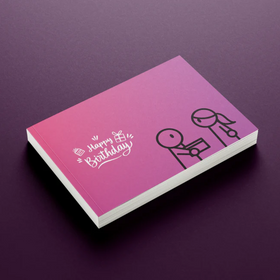on all orders

The Beauty of Indian Motifs: Discovering Cultural Stickers
Have you ever wondered about the intricate and mesmerizing beauty of Indian motifs? They seem to hold a captivating allure, drawing you in and making you eager to uncover the secrets they hold. What if I told you that these enchanting designs can be discovered in the form of cultural stickers? Yes, these stickers not only add a touch of elegance to your belongings but also provide a fascinating glimpse into the rich cultural heritage of India. But why are these motifs so special? What stories do they hold? And how can they be used to express your cultural pride? Join us as we embark on a journey to unravel the beauty of Indian motifs and discover the world of cultural stickers.
The History and Origins of Indian Motifs
The origins and historical development of Indian motifs can be traced back to ancient civilizations, reflecting the rich cultural heritage and artistic traditions of the Indian subcontinent. Indian motifs are inspired by a variety of sources, ranging from nature and wildlife to religion and mythology. These motifs have evolved over time, incorporating influences from different regions and periods.
One of the primary inspirations for Indian motifs is nature. The diverse flora and fauna of the Indian subcontinent have provided artists with a vast array of subjects to draw inspiration from. Flowers, birds, animals, and trees are commonly depicted in Indian motifs, showcasing the deep connection between the people and the natural world.
Religion and mythology also play a significant role in the evolution of Indian motifs. Hinduism, Buddhism, and Jainism, among other religions, have provided artists with a wealth of iconography to incorporate into their designs. Gods, goddesses, deities, and mythical creatures are often featured in Indian motifs, representing different aspects of spirituality and belief systems.
Throughout history, Indian motifs have continued to evolve, blending different styles and influences. The Mughal empire, for example, introduced Persian and Islamic elements to Indian art, resulting in a fusion of styles known as Indo-Islamic motifs. The British colonial period also left its mark on Indian motifs, with the introduction of European techniques and designs.
The history and origins of Indian motifs are a testament to the rich cultural heritage and artistic traditions of the Indian subcontinent. They continue to inspire and captivate people around the world, showcasing the beauty and intricacy of Indian art.
Exploring the Symbolism and Meaning Behind Indian Motifs
As we delve into the intricate world of Indian motifs, it is fascinating to explore the symbolism and meaning that lies behind these culturally significant designs. Indian motifs are not merely decorative elements, but they serve as a symbolic representation of various aspects of Indian culture and spirituality.
One of the key aspects of Indian motifs is their ability to convey deep meanings and stories through their intricate patterns and designs. These motifs often draw inspiration from nature, incorporating elements such as flowers, animals, and geometric shapes. Each motif holds a unique significance, representing different aspects of Indian life and beliefs.
Traditional craftsmanship plays a crucial role in the creation of Indian motifs. Skilled artisans meticulously handcraft these designs using various techniques like block printing, embroidery, and weaving. The motifs are passed down through generations, preserving the rich cultural heritage of India.
For example, the lotus motif, commonly found in Indian art and textiles, symbolizes purity, enlightenment, and spiritual awakening. The peacock motif represents beauty, grace, and fertility. The elephant motif symbolizes power, wisdom, and good fortune.
The Intricate Artistry of Indian Motifs
With their intricate patterns and meticulous craftsmanship, Indian motifs showcase an artistry that captivates and mesmerizes. Indian motif tapestries are a testament to the rich cultural heritage of India, with each design telling a unique story. The level of detail and precision in these motifs is truly remarkable, as artisans painstakingly create each piece by hand. The motifs often feature geometric shapes, floral patterns, and intricate borders, all intricately woven together to create a visually stunning tapestry.
One of the key elements of Indian motifs is the significance of colors. Each color used in these motifs holds a symbolic meaning, reflecting the cultural beliefs and traditions of India. For example, red represents passion and strength, while yellow symbolizes knowledge and learning. Green is associated with fertility and growth, and blue represents divinity and spirituality. By incorporating these colors into their designs, Indian artisans are able to convey deeper meanings and evoke emotional responses from viewers.
The artistry of Indian motifs is not just limited to tapestries. These intricate designs can be found in various forms of Indian art and craftsmanship, such as pottery, jewelry, and clothing. The attention to detail and the skill required to create these motifs is a testament to the craftsmanship and creativity of Indian artisans.
The Influence of Indian Motifs in Modern Design
Indian motifs have had a significant impact on the world of modern design, incorporating their intricate patterns and vibrant colors into various art forms and everyday objects. One area where Indian motifs have found widespread use is in contemporary fashion. Designers are drawn to the unique and eye-catching patterns that Indian motifs offer, incorporating them into clothing, accessories, and even footwear. The intricate designs add a touch of elegance and cultural richness to modern fashion, making it more diverse and appealing.
Another area where Indian motifs have made their mark is in interior design. The blending of tradition and modernity is a key aspect of this trend. Indian motifs are often used to bring a sense of cultural heritage and history into modern spaces. They add a touch of authenticity and uniqueness to the overall design, making the space more visually interesting and inviting. Whether it is through the use of intricate wallpaper patterns, embroidered textiles, or handcrafted furniture, Indian motifs create a harmonious fusion of the past and the present.
Incorporating Indian motifs in contemporary fashion and interior design allows for a celebration of Indian culture, while also embracing the beauty and versatility of these intricate designs. It is a way to pay homage to the rich artistic traditions of India, while also creating modern and visually stunning designs. The influence of Indian motifs in modern design is undeniable, and it continues to inspire and captivate designers and consumers alike.
Expressing Cultural Pride With Indian Motif Stickers
Incorporating Indian motif stickers into your personal belongings allows you to proudly showcase your cultural heritage. By adorning your belongings with these stickers, you are celebrating diversity and embracing your Indian heritage. Indian motifs are rich in symbolism and history, and they serve as a powerful means of expressing your cultural identity.
These stickers come in a variety of designs, ranging from intricate mandalas to vibrant peacocks. Each motif carries its own significance and represents different aspects of Indian culture. By affixing these stickers to your belongings, you are not only adding a touch of beauty but also making a statement about your cultural pride.
Whether you choose to place Indian motif stickers on your laptop, phone case, water bottle, or even your car, these stickers serve as a visual representation of your connection to Indian culture. They provide a way for you to express your heritage and share it with others.
Moreover, these stickers can act as conversation starters, allowing you to engage in meaningful discussions about Indian culture and traditions. They provide an opportunity to educate others about the beauty and diversity of Indian heritage.
Conclusion
In conclusion, Indian motifs hold a rich history and cultural significance that continues to inspire and captivate. Their intricate artistry and symbolism make them a valuable part of Indian heritage and design. These motifs have also found their way into modern design, influencing and enriching contemporary aesthetics. By using Indian motif stickers, individuals can express their cultural pride and appreciation for the beauty and depth of Indian art.





Leave a comment